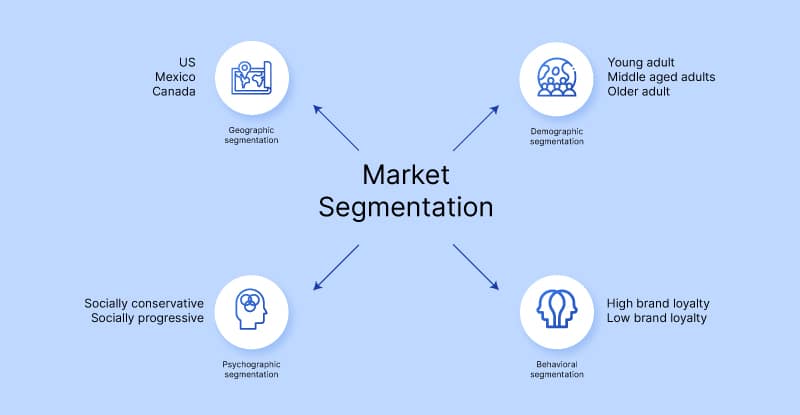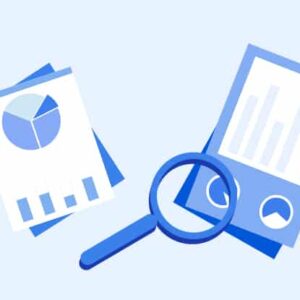
5 Best Customer Satisfaction Survey Templates
5 Customer Satisfaction Survey Templates Examples SHARE THE ARTICLE ON Table of Contents For a paying customer, experience with your company influences their decision of

Find the best survey software for you!
(Along with a checklist to compare platforms)
Take a peek at our powerful survey features to design surveys that scale discoveries.
Explore Voxco
Need to map Voxco’s features & offerings? We can help!
Find the best customer experience platform
Uncover customer pain points, analyze feedback and run successful CX programs with the best CX platform for your team.

We’ve been avid users of the Voxco platform now for over 20 years. It gives us the flexibility to routinely enhance our survey toolkit and provides our clients with a more robust dataset and story to tell their clients.
Steve Male
VP Innovation & Strategic Partnerships, The Logit Group
Explore Regional Offices

Find the best survey software for you!
(Along with a checklist to compare platforms)
Take a peek at our powerful survey features to design surveys that scale discoveries.
Explore Voxco
Need to map Voxco’s features & offerings? We can help!
Find the best customer experience platform
Uncover customer pain points, analyze feedback and run successful CX programs with the best CX platform for your team.

We’ve been avid users of the Voxco platform now for over 20 years. It gives us the flexibility to routinely enhance our survey toolkit and provides our clients with a more robust dataset and story to tell their clients.
Steve Male
VP Innovation & Strategic Partnerships, The Logit Group
Explore Regional Offices

Find the best survey software for you!
(Along with a checklist to compare platforms)
Take a peek at our powerful survey features to design surveys that scale discoveries.
Explore Voxco
Need to map Voxco’s features & offerings? We can help!
Find the best customer experience platform
Uncover customer pain points, analyze feedback and run successful CX programs with the best CX platform for your team.

We’ve been avid users of the Voxco platform now for over 20 years. It gives us the flexibility to routinely enhance our survey toolkit and provides our clients with a more robust dataset and story to tell their clients.
Steve Male
VP Innovation & Strategic Partnerships, The Logit Group
Explore Regional Offices
Every business requires an audience. To target an audience suitable for the brand, you need insights on customer’s preferences, needs, interests, and other factors that influence their purchase behavior. The question is how you can obtain these insights?
Market Segmentation is the answer to understand your customers in terms of their preferences, lifestyle, etc.
Get started with Voxco’s Market Research Toolkit.
Market Research trends guide + Online Surveys guide + Agile MArket Research Guide + 5 Market Research Templates
01
Market Segmentation is an approach adopted by marketers. The process involves dividing the customers on the basis of the characteristics they share with each other. The information about the segmented customers makes it easy for brands to develop a market strategy appropriate for a specific segment.
Market Segmentation helps in the development of products, exploring the market, boosting customer loyalty and retention, increasing ROI, etc. The detailed information gives the brand an opportunity to focus their business and make the marketing effort more customer-centric.
Learn how to meet respondents where they are, drive survey completion while offering a seamless experience, Every Time!
02
M.A.S.D.A. is a criterion that marketers use to make sure that the information obtains from marketing segmentation is useful for the marketing strategy.
Measurable: The segmentation attributes should be quantifiable and relevant to the purchase of your products or services, such as purchasing power. It should tell you how much a segment will spend on your products. This way a marketer understands how much resource and effort they should invest in the segment.
Accessible: Is your segment within your reach? You need to select a market segment that you can connect with, reach with the right channels and serve them. A segment out of reach is of no use for your brand. Also, you need to ensure that what you are offering is within the reach of the segment.
Substantial: When you segment your market you need to see to it that your segment is large and they have the ability to purchase your product. You don’t want to waste your resource on a segment that can disappear or has little purchasing power.
Differentiable: Your market segment should be easily differentiable. This implies that you need to segment the audience in terms of shared characteristics and preferences; it should be a homogeneous segment.
You need to make sure that the audience and the characteristics don’t overlap. It would rather be a waste of marketing effort and resources to cater to a small subgroup when your product appeals to a large audience.
Actionable: Your segmentation should yield practical value. You cannot reach success and appeal to your target audience if you don’t have actionable insights. You need to take appropriate action based on the insights you received from a particular segment.

03
You need a goal to define why you want to segment your target market. Without a goal you will be directionless, having no idea about what information to collect and what to do with the data.
You can look at what the company goals are and set your market segment goal as something that will benefit the company goal. Your marketing objective could be increasing customer interaction with your social media, or increasing website traffic, or increasing revenue.
However, ensure that your marketing objective is clear and precise. It should not be extremely specific or extremely general. Also, make sure that you can track and analyze the data you need to reach your goal. It should be relevant to the company goal.
Without any objectives, you will start making assumptions that will not do any profit for the brand.
Conducting an audience analysis on your current customers can help you learn more about different characteristics and preferences. You can also identify trends within the market.
Interview: You can Interview your customers to learn directly from them. You can question them on factors related to the market segmentation. This way you can gain detailed and precise insights on the preference, interests, and characteristics to make it easy for you to segment your target audience.
Social Media: You can track social media to have access to audience data and assess what social media marketing interests your audience. Customers engage with a social media update when it is relevant to the content they are searching for. This gives you information about their behavioral insight. However, social media also tracks demographic, psychographic, and geographic information.
With more than 3 million active users on an everyday basis, social media produces tons of relevant data. Social media is a platform where customers share what they feel about a brand, leave reviews, share experiences and interact with other consumers. It is the best modern-day channel to interact and connect with the audience.
Web Analytics: This platform gives you information about who visits your website. One prime example of Web Analytics is Google Analytics. It tracks the demographic, behavioral, geographic, and psychographic data of the website users.
Web Analytics tracks whether your website visitors are new or returning. Also, it monitors the users who are currently active on your website and what they are looking for using the website for.
Along with the audience, it also tracks the sources of traffic. This implies that it shows you through which channel your audiences reach your website.
Web analytics records how long visitors spend on your pages. This tells you how relevant your content is.
After audience analysis, you now have a good understanding of who your current and prospective customers are. A buyer’s persona helps define a specific customer type that you are aiming for. A buyer persona is a fictional description of your target audience. It helps to understand what type of person you are trying to target.
Target Market: You need to first define what your target market is. Knowing which segment you are targeting will make it easy for you to create a buyer persona with the characteristics which are specific to that segment. This way you can target and serve the right audience.
Target Audience: Now you need to list down the characteristics you want to target in your ideal customer. Who do you want to engage with your brand and products? Which market segment will bring you more profit?
Define such questions to understand what factors you want to target and which market segment to target.

Free Market Research Toolkit
Fill out this form to access 5 market research survey templates + 2 MR guides
04
Defining these helps you develop an appropriate marketing strategy. You have to separate your market into your prospective/interested customers and uninterested customers. To identify your prospective customers you need to do research.
Research in market segmentation helps you learn the needs and preferences of your ideal customers. The characteristics of the audience that you want to aim for your products/services do they have purchase ability; all these questions need to be answered by you before you start targeting a segment. Research helps you identify real groups of audiences in the market.
Data gives you insights on which market segment showcases strong interest for your brand, product, service, etc. You may choose to analyze the data of any one of the four types of market segmentation. Or you may also combine data of two different segmentations to yield more accurate and relevant information.
Developing a precise and accurate segmentation strategy can push your brand forward and give you focus and structure.
You also need to consider which channel you can use to reach your target audience. It is best to use a communication channel that aligns with your brand and the data of your market segmentation.
Social Media is one of the most used communication channels. It is preferred by all the Millenials and Gen-Z. On the other hand, emails and television are still preferred by old generations.
Your market segmentation will provide you with information about which generation prefers what kind of communication channel. You can proceed with your marketing strategy with the preferred channel of the market segment you are targeting.
Market Segmentations allows you to understand and gives you a glimpse into the factual as well as emotional similarities and differences between the customers. You connect with the audience on a more personal level which helps you make informed and data-driven decisions. While learning who will deliver the most value for your company, you also learn how you can serve your audience. You learn to act on the actionable insight and lead the brand to success.

05
MASDA stands for Measurable, Accessible, Substantial, Differentiable, and Actionable. These also define the good characteristics of market segmentation.
Demographic Segmentation is a type of market segmentation. The segment includes audiences who share similar characteristics in terms of, age, gender, education level, occupation, income, etc.
Segmentation, Targeting, and Positioning are the three successful Market Strategies.
Customer Segmentation refers to the process of separating customers into sub-groups. The division is done based on the shared characteristics. This allows a brand to make an effective marketing strategy to reach each segment with an appropriate marketing message.
Read more

5 Customer Satisfaction Survey Templates Examples SHARE THE ARTICLE ON Table of Contents For a paying customer, experience with your company influences their decision of

The use of Causal Research in making Business Decisions See what question types are possible with a sample survey! Try a Sample Survey Table of

Transactional NPS® vs Relationship NPS® SHARE THE ARTICLE ON Table of Contents What is NPS®? Net Promoter Score®, or NPS®, is a metric that is
Predictive Analytics SHARE THE ARTICLE ON Table of Contents The use of data to forecast future trends and occurrences is known as predictive analytics. It

Change is sweeping across the decades-old phone survey industry, and large survey call centers across the US are reacting in a variety of ways to

Are your customers taking too much effort? See what question types are possible with a sample survey! Try a Sample Survey Table of Contents 01
We use cookies in our website to give you the best browsing experience and to tailor advertising. By continuing to use our website, you give us consent to the use of cookies. Read More
| Name | Domain | Purpose | Expiry | Type |
|---|---|---|---|---|
| hubspotutk | www.voxco.com | HubSpot functional cookie. | 1 year | HTTP |
| lhc_dir_locale | amplifyreach.com | --- | 52 years | --- |
| lhc_dirclass | amplifyreach.com | --- | 52 years | --- |
| Name | Domain | Purpose | Expiry | Type |
|---|---|---|---|---|
| _fbp | www.voxco.com | Facebook Pixel advertising first-party cookie | 3 months | HTTP |
| __hstc | www.voxco.com | Hubspot marketing platform cookie. | 1 year | HTTP |
| __hssrc | www.voxco.com | Hubspot marketing platform cookie. | 52 years | HTTP |
| __hssc | www.voxco.com | Hubspot marketing platform cookie. | Session | HTTP |
| Name | Domain | Purpose | Expiry | Type |
|---|---|---|---|---|
| _gid | www.voxco.com | Google Universal Analytics short-time unique user tracking identifier. | 1 days | HTTP |
| MUID | bing.com | Microsoft User Identifier tracking cookie used by Bing Ads. | 1 year | HTTP |
| MR | bat.bing.com | Microsoft User Identifier tracking cookie used by Bing Ads. | 7 days | HTTP |
| IDE | doubleclick.net | Google advertising cookie used for user tracking and ad targeting purposes. | 2 years | HTTP |
| _vwo_uuid_v2 | www.voxco.com | Generic Visual Website Optimizer (VWO) user tracking cookie. | 1 year | HTTP |
| _vis_opt_s | www.voxco.com | Generic Visual Website Optimizer (VWO) user tracking cookie that detects if the user is new or returning to a particular campaign. | 3 months | HTTP |
| _vis_opt_test_cookie | www.voxco.com | A session (temporary) cookie used by Generic Visual Website Optimizer (VWO) to detect if the cookies are enabled on the browser of the user or not. | 52 years | HTTP |
| _ga | www.voxco.com | Google Universal Analytics long-time unique user tracking identifier. | 2 years | HTTP |
| _uetsid | www.voxco.com | Microsoft Bing Ads Universal Event Tracking (UET) tracking cookie. | 1 days | HTTP |
| vuid | vimeo.com | Vimeo tracking cookie | 2 years | HTTP |
| Name | Domain | Purpose | Expiry | Type |
|---|---|---|---|---|
| __cf_bm | hubspot.com | Generic CloudFlare functional cookie. | Session | HTTP |
| Name | Domain | Purpose | Expiry | Type |
|---|---|---|---|---|
| _gcl_au | www.voxco.com | --- | 3 months | --- |
| _gat_gtag_UA_3262734_1 | www.voxco.com | --- | Session | --- |
| _clck | www.voxco.com | --- | 1 year | --- |
| _ga_HNFQQ528PZ | www.voxco.com | --- | 2 years | --- |
| _clsk | www.voxco.com | --- | 1 days | --- |
| visitor_id18452 | pardot.com | --- | 10 years | --- |
| visitor_id18452-hash | pardot.com | --- | 10 years | --- |
| lpv18452 | pi.pardot.com | --- | Session | --- |
| lhc_per | www.voxco.com | --- | 6 months | --- |
| _uetvid | www.voxco.com | --- | 1 year | --- |